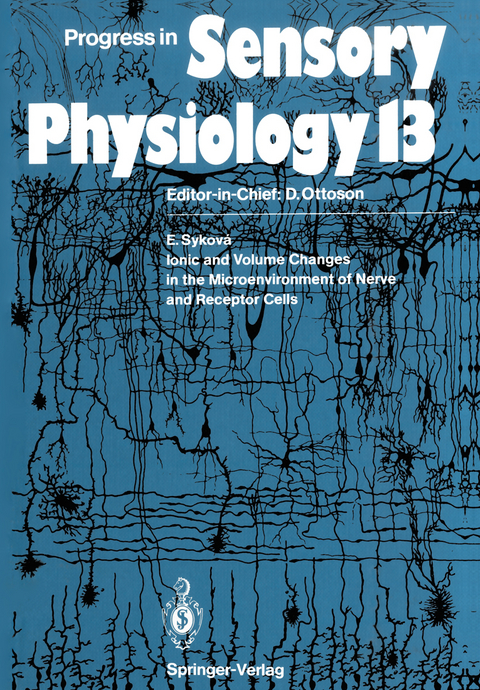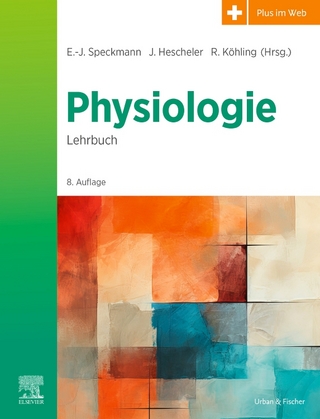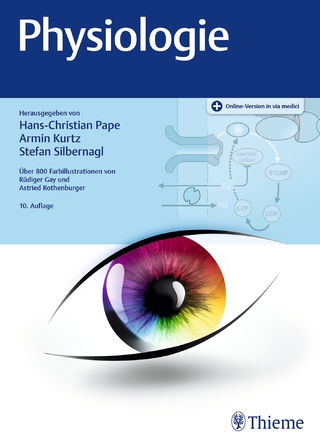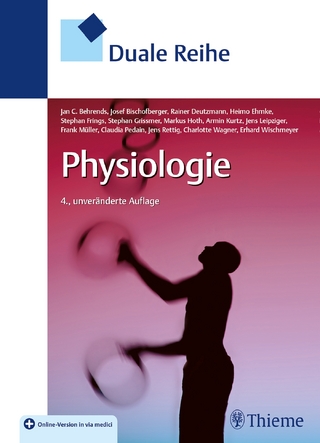
Ionic and Volume Changes in the Microenvironment of Nerve and Receptor Cells
Springer Berlin (Verlag)
978-3-642-76939-9 (ISBN)
1 Introduction.- 2 Ion-Selective Microelectrodes.- 3 K+ Homeostasis in the ECS.- 3.1 Stability of K+ in the Extracellular Fluid.- 3.2 Sources of [K+]e Increases.- 3.3 Redistribution of Extracellularly Accumulated K+.- 4 Dynamic [K+]e Changes.- 4.1 Dynamic [K+]e Changes in the Spinal Cord...- 4.2 Dynamic [K+]e Changes in the Brain.- 4.3 Functional Significance of [K+]e Changes in the CNS.- 4.4 Dynamic K+ Changes in the Organ of Corti.- 4.5 Changes in K+ Concentration in the Retina.- 5 Dynamic Changes in Extracellular Na+, Cl-, and Ca2+ Concentration.- 5.1 Changes Induced in Resting [Ca2+]e During Stimulation of Afferent Input.- 5.2 [Ca2+]e Changes in Pathological States.- 5.3 Functional Significance of Dynamic [Ca2+]e Changes.- 6 Dynamic pHe Changes.- 6.1 Extracellular Buffering Power.- 6.2 Activity-Related Dynamic pHe Changes in Nervous Tissue.- 6.3 Mechanisms of pHe Changes in the CNS.- 6.4 Role of Glial Cells in pHe Homeostasis.- 6.5 pHe Changes in the Retina.- 6.6 pHe Changes During Anoxia, Ischaemia, Epilepsy, and SD.- 6.7 Functional Significance of pHe Changes.- 7 Dynamic Changes in Size of the ECS.- 7.1 Measurement of Changes in Size of the ECS by Means of K+-ISMs.- 7.2 Changes Induced in Size of the ECS by Electrical Stimulation.- 7.3 Changes Induced in Size of the ECS by Adequate Stimulation.- 7.4 Mechanisms of Dynamic Changes in Size of the ECS.- 7.5 Functional Significance of Dynamic Volume Changes in the Microenvironment of Nerve Cells.- 8 Conclusion.- References.
| Erscheint lt. Verlag | 21.12.2011 |
|---|---|
| Reihe/Serie | Progress in Sensory Physiology |
| Zusatzinfo | X, 167 p. |
| Verlagsort | Berlin |
| Sprache | englisch |
| Maße | 170 x 242 mm |
| Gewicht | 318 g |
| Themenwelt | Studium ► 1. Studienabschnitt (Vorklinik) ► Physiologie |
| Naturwissenschaften ► Biologie ► Humanbiologie | |
| Schlagworte | brain • Cells • Cortex • Depression • Epilepsy • glial cells • Hypoxia • Nervenzellen • nervous tissue • neurons • Neuropeptides • Neurophysiologie • Neurophysiologie / Nervenphysiologie • Neurophysiology • Physiology • retina • sensory organs • Sinnesorgane • spinal cord • tissue |
| ISBN-10 | 3-642-76939-X / 364276939X |
| ISBN-13 | 978-3-642-76939-9 / 9783642769399 |
| Zustand | Neuware |
| Informationen gemäß Produktsicherheitsverordnung (GPSR) | |
| Haben Sie eine Frage zum Produkt? |
aus dem Bereich


